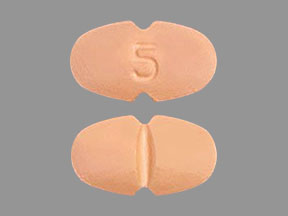Corlanor Side Effects
Generic name: ivabradine
Medically reviewed by Drugs.com. Last updated on Apr 3, 2023.
Note: This document contains side effect information about ivabradine. Some dosage forms listed on this page may not apply to the brand name Corlanor.
Applies to ivabradine: oral solution, oral tablet.
Serious side effects of Corlanor
Along with its needed effects, ivabradine (the active ingredient contained in Corlanor) may cause some unwanted effects. Although not all of these side effects may occur, if they do occur they may need medical attention.
Check with your doctor immediately if any of the following side effects occur while taking ivabradine:
More common
- Blurred vision
- chest pain or discomfort
- fast or irregular heartbeat
- headache
- lightheadedness, dizziness, or fainting
- nervousness
- pounding in the ears
- slow or irregular heartbeat
- unusual tiredness
Incidence not known
- Confusion
- dizziness, faintness, or lightheadedness when getting up suddenly from a lying or sitting position
- hives or welts, itching, or skin rash
- large, hive-like swelling on the face, eyelids, lips, tongue, throat, hands, legs, feet, or genitals
- sweating
Other side effects of Corlanor
Some side effects of ivabradine may occur that usually do not need medical attention. These side effects may go away during treatment as your body adjusts to the medicine. Also, your health care professional may be able to tell you about ways to prevent or reduce some of these side effects.
Check with your health care professional if any of the following side effects continue or are bothersome or if you have any questions about them:
Less common
- Seeing flashes of light
Incidence not known
- Double vision
- feeling of constant movement of self or surroundings
- flushing or redness of the skin
- seeing double
- sensation of spinning
- trouble seeing
- unusually warm skin
For Healthcare Professionals
Applies to ivabradine: oral liquid, oral tablet.
General
The most common side effects were cardiac failure, phosphene-like events, and bradycardia.[Ref]
Cardiovascular
Very common (10% or more): Cardiac failure (21.7%), bradycardia (up to 10%)
Common (1% to 10%): Hypertension, blood pressure increased, atrial fibrillation, ventricular extrasystoles, atrioventricular block first degree, unstable angina, angina pectoris aggravated, myocardial ischemia, blood pressure inadequately controlled, sinus tachycardia, supraventricular extrasystoles, atrial flutter, ventricular tachycardia, bradycardia symptomatic, bradycardia asymptomatic, angina pectoris, acute myocardial infarction, myocardial infarction, hypotension, sudden cardiac death
Uncommon (0.1% to 1%): Palpitations, sinus arrhythmia, ECG prolonged QT interval
Very rare (less than 0.01%): Atrioventricular block second degree, atrioventricular block third degree, sick sinus syndrome
Postmarketing reports: Torsade de pointes, ventricular fibrillation[Ref]
Ocular
Very common (10% or more): Phosphene-like events (14.5%)
Common (1% to 10%): Phosphenes, visual brightness, blurred vision
Uncommon (0.1% to 1%): Diplopia, visual impairment[Ref]
Phosphenes generally occur within the first 2 months of treatment and may occur repeatedly afterward. They were generally reported as mild to moderate in intensity and led to discontinuation in less than 1% of patients. Most cases resolved during or after treatment.[Ref]
Respiratory
Common (1% to 10%): Pneumonia, bronchitis acute, bronchitis, nasopharyngitis, upper respiratory tract infection, respiratory tract infection, influenza, cough, chronic obstructive pulmonary disease
Uncommon (0.1% to 1%): Dyspnea[Ref]
Metabolic
Common (1% to 10%): Diabetes mellitus inadequately controlled, diabetes mellitus, hypercholesterolemia, hypokalemia, hyperuricemia[Ref]
Nervous system
Common (1% to 10%): Headache, dizziness, ischemic stroke
Uncommon (0.1% to 1%): Syncope[Ref]
Other
Common (1% to 10%): Sudden death, fall
Uncommon (0.1% to 1%): Vertigo, asthenia, fatigue
Rare (less than 0.1%): Malaise[Ref]
Gastrointestinal
Common (1% to 10%): Diarrhea, gastritis
Uncommon (0.1% to 1%): Nausea, constipation, abdominal pain[Ref]
Hematologic
Common (1% to 10%): Blood creatinine increased, anemia
Uncommon (0.1% to 1%): Eosinophilia[Ref]
Renal
Common (1% to 10%): Renal failure[Ref]
Hepatic
Common (1% to 10%): Transaminases increased[Ref]
Dermatologic
Uncommon (0.1% to 1%): Angioedema, rash
Rare (less than 0.1%): Erythema, pruritus, urticaria[Ref]
Musculoskeletal
Uncommon (0.1% to 1%): Muscle cramps[Ref]
More about Corlanor (ivabradine)
- Check interactions
- Compare alternatives
- Pricing & coupons
- Reviews (6)
- Drug images
- Dosage information
- During pregnancy
- Generic availability
- FDA approval history
- Drug class: miscellaneous cardiovascular agents
- En español
Patient resources
Professional resources
Related treatment guides
References
1. Cerner Multum, Inc. UK Summary of Product Characteristics.
2. Cerner Multum, Inc. Australian Product Information.
3. Product Information. Corlanor (ivabradine). Amgen USA. 2015.
Further information
Always consult your healthcare provider to ensure the information displayed on this page applies to your personal circumstances.
Some side effects may not be reported. You may report them to the FDA.

